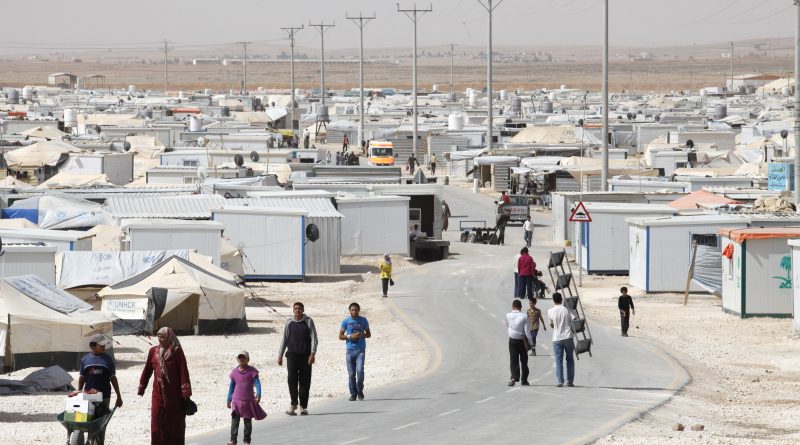The Robust Roles of Women in Terrorism Cannot Be Overlooked
Madeline Field
Staff Writer
When you think of terrorists, do you ever think of women?
When women are portrayed as terrorists, stereotypes abound; they are “schoolgirls,” “mothers, monsters, whores,” and “shy housewives.” They are women manipulated by their husbands to commit violence. They are caregivers who betray their children by leaving them behind. Women are (often accurately) perceived as victims of terrorist oppression rather than architects of terrorist violence. The idea of female terrorists offends gendered conceptions about the stereotypically passive roles women take in society, especially in conflict.
Yet the reality of female terrorism complicates those narratives. Many women are eager and active members of terrorist groups and participate in terrorism at higher rates than is assumed. Thus, studying women in terrorism is essential to further gendered perspectives on counterterrorism. To tackle the most critical counterterrorism challenges of our time- the rise of Islamic terrorism in the Sahel, the prospect of repatriating former ISIS devotees, and the flourishing of right-wing terrorism- gender-conscious approaches to counterterrorism are necessary.
What role do women play in terrorist organizations?
Women have played active roles in terrorist groups dating back to the late-1800s, with Russians like Vera Zasulich and Sofia Perovskaia directing assassination attempts as early as 1878. Women have been identified as terrorists throughout history in various politically and economically unique countries, from Chechnya and Colombia, to Indonesia and Iraq, to the UK and the U.S.
Women began to gain widespread prominence as terrorists in the 60s, 70s, and 80s amidst a radical feminist wave. At that time, terrorist groups such as West German Rote Zora and the May 19th Communist Organization, the first and only exclusively female terrorist group in existence that notably bombed the U.S. Capitol, dominated headlines. Women rose to prominent and high-ranking positions in left-wing organizations, which typically sought to overthrow capitalist governments due to embracing more egalitarian, gender-equitable ideologies.
Sharply usurping the prominence of leftist terrorism has been right-wing domestic terrorism and Islamic terrorism. While until recently, women have typically been shut out of right-wing organizations due to leaders’ ideologies, scores of women have gained strategic prominence in Islamic terrorist organizations. In fact, of the living foreign fighters who have fled to ISIS-controlled territory, roughly 13 percent are women.
The ideological variety of terrorist groups frequented by women is only usurped by the vast array of roles they play in said organizations. Undoubtedly, in jihadist and radical far-right groups, women are increasingly recruited to play active roles in terrorist groups due to their strategic value.
Women make great evangelizers. Women are traditionally viewed as more trustworthy and have higher-network activity than males, making their advice more plausible to many other females. Thus, they can attract more women and even men to join their cause and help expand an organization’s domestic and overseas footprint.
Women also elicit sympathy for terrorist groups and may normalize violence. As recently as the 1960s, for example, white women and their subsequent interactions with black males were utilized as symbols by the Ku Klux Klan to condone racism, lynchings, and other extra-judicial killings and garner sympathy for the white cause. Women who join terrorist groups may be viewed more sympathetically than men by local communities and garner more attention for their attacks, furthering the organization’s goals and entrenching violence in society,
Women also make effective combatants. In many societies, especially those in which traditional Islamic gender roles dominate, women and children can evade the many strict security protocols designed to foil male terrorists. In many countries, women and children are considered sacred and unlikely combatants, meaning targets may let their guard down in their presence. These vulnerabilities may make them more effective purveyors of violence than men.
While women have played active combat roles in radical communist terrorist groups such as FARC, proving to be fierce guerrilla fighters, women more recently seem to be utilized most frequently as suicide bombers. Female suicide bombings have occurred across many countries, such as Chechnya, Palestine, Uzbekistan, Iraq, Lebanon, Indonesia, and Morocco, and many organizations have outstripped male suicide bombings. The Nigerian terrorist group Boko Haram, for example, utilized nearly 500 women in suicide bombings in less than four years, causing over 4000 casualties. Suicide bombings enacted by females are four times as deadly as males due to less rigorous security screenings for women.
Women also function in non-combat roles as money launderers, homemakers, and sex slaves. In the Syrian refugee camp Al-Hawl, former ISIS wives have evaded police detection, allowing them to proselytize and keep the caliphate alive through inconspicuous activities such as money laundering. This marks a significant break from female activities at the height of the caliphate; in those years, female recruits were immediately married to jihadis to have children shortly thereafter. Having “ISIS children,” much like money laundering, was deemed ideologically essential to reproducing the caliphate and a fitting role for women to adopt. This “homemaker” phenomenon is also seen in Boko Haram and Al Shabab, although the latter gives fighter wives much more autonomy and allows them to adopt more significant organizational roles.
While women tend not to head up terrorist groups, their utility in creating terror and unmistakable role in continuing the growth of terrorist organizations make them an essential part of counterterrorism strategy. With the rise of terrorism in the Sahel and Southeast Asia, the question of how women will be used is important. So far, they have primarily served in supportive roles as cooks, wives, and suicide bombers, but those roles may change.
Why do women join?
Not all women affiliated with terrorist organizations are drawn to bloodlust or radical ideology. Some women are coerced into joining or directly kidnapped by militant groups, then forced to commit suicide bombings or placed into de facto sex slavery. Nevertheless, although it is unclear what percentage, many women join through their own free will. It is undoubtedly vital to understand female motivations for joining terrorist organizations.
Understanding motivations can, however, be complex. Decades-long attempts at teasing out even a typical (i.e., male) “terrorist profile” have largely failed. Domestically, according to Brookings, evidence suggests that the “frustrated expectations of individuals for economic improvement and social mobility” or “relative deprivation” of well-educated yet under-employed individuals within a population may push the adoption of radical social theories like terrorism to express political frustration. People who join terrorist groups tend to be younger and more susceptible to recruitment that promises them belonging and purpose. Yet relying exclusively on age, race, ideology, and socioeconomics fails to predict susceptibility to terrorist behavior.
Unsurprisingly, profiles of female terrorists are even less understood and assumed to be anomalous. A nominal number of studies on female terrorists are published, and even fewer examine non-jihadi women. In a rare background study by NC State University of 250 women and men involved in jihad, researchers found a mere two percent of jihadi women had criminal records. Women tended to be younger than their male counterparts and were also three times as likely to be unemployed as men.
Motivations, however, are what drive susceptible women to join. Lea-Grace Salcedo of the Marshall Center succinctly delineates between push and pull factors for female involvement. Pull factors for women are desires “for a new environment, pride, support of a political cause, free education and training, image, and access to social and political roles,” and push factors are “deprivation, redemption and honor, revenge, romantic ties, family influence, commitment to an ideological cause, traumatic experiences, and protection of self and family.” Concretely, motivations may be desires to express female agency, be tied to personal grievances, and be influenced by propaganda which promises another entirely different experience.
The Australian Institute of International Affairs writes that many women may view “extremist ideology as ‘freeing’ and a choice of their own, despite the draconian way they are often treated in extremist groups.” As in the case of ISIS’ brutal all-female Al-Khansaa brigade, a feared morality police division of ISIS, some women may defer to traditional values and view joining a terrorist group as a sort of rebellion against loose morality. Another researcher characterizes voluntary female recruitment in Al Shabab as a sense of meaning, “a struggle to exercise agency within systems of oppression in patriarchal setups with the lure for emancipation within the Al-Shabaab network and the utopian caliphate.” To the casual observer, it seems complicated to imagine that women would gain a sense of empowerment from terrorist groups- modern terror groups like Al Qaeda or far-right movements tend to marginalize women- but regardless, many do.
Like with men, personal grievances may also drive recruitment. This was the case for many members of the Black Widows, a prominent anti-Russian Muslim group that utilized female suicide bombers in high-publicity attacks and is infamous for a five-day hostage crisis in a Russian theater that killed nearly 200 people in 2002. In the case of the Chechen Black Widows, desires for political autonomy were coupled with grief and cultural norms of revenge; many women described being motivated by the deaths of their husbands and fathers during the First and Second Chechen Wars.
For others, especially Western women, clever propaganda targeting sympathetic women can prove incredibly influential. Reports in 2015 of women as young as 15 convinced to join ISIS online by propagandists who sold visions of romance and utopian politics were shocking. These girls were deeply influenced by viral depictions of shelled Syrian cities and crying orphaned infants, who saw their joining as a twisted way to save Muslims. Such recruitment tactics are also seen in QAnon propaganda, which weaponized a hashtag, #savethechildren, and allegations of an underground child sex trafficking ring run by prominent liberal government officials, to draw American mothers into the organization.
Motivations for joining terror groups vary, with some attractions similar to male motivations. With most current research focusing solely on foreign women joining international terrorist groups, identifying a proclivity to join a terrorist group based on ideology or behavior alone is even more difficult.
How is the issue of women terrorists depicted?
Media often sensationalizes cases of women who join terrorist organizations or commit terrorist acts, complicating counterterrorism efforts. Research indicates that reports of young women being lured to ISIS through social media “emphasized their gender and portrayed their actions as deviant from appropriate performances of femininity,” as women are typically represented as victims of violence, not perpetrators of terrorism. Since the concept was so shocking and rare to the everyday reader, depictions of such women have enormous staying power in how they are perceived by the public, making them particularly susceptible to stereotyping.
According to researcher Brigitte L. Nacos, such misinformed framings include commentaries on physical appearance and allegories to gender extremism, insinuations that motivations are due to family or “for the sake of love,” manufactured comparisons between them and males (because no “real” woman would be a terrorist), and suggestions that such women are “bored, naïve, out-of-touch-with-reality.” A salient example of these framings is the case of the ‘ISIS schoolgirls’, three teenagers who abruptly left their lives in a middle-class London neighborhood and traveled to Syria, and the female ‘Black Widows‘ of Chechnya.
Women terrorists have used these framings to their advantage. In the aftermath of the January 6th insurrection, lawyers for women arrested have drawn “attention to their clients’ responsibility for care work (including their roles as mothers and wives) and their compassion” to make the case for more lenient sentencing, according to NBC News. When comparing sentencing lengths, these rhetorical appeals have largely been successful.
Evidently, such framings affect women in many spaces but are particularly noxious in the given context. According to political scientists and reported in The Security Distillery, depictions of female inclusion in political violence as ‘unnatural’ negate female agency and deemphasize ‘legitimate’ reasons for joining terrorist groups. Incorrect framings may be dangerous in that they distort conceptions of why women join terrorist organizations, complicating preventative measures for women who may have been radicalized. Inaccurate depictions of female terrorists may also be problematic because they tend to prove more elusive to the public, confounding detection and making it more challenging to foil their plots.
What does all this mean?
Research efforts must account for gendered perspectives to understand the role of women in terrorism. Women play numerous roles in terrorist organizations, from financers and human traffickers to recruiters and guerrilla fighters. Still, many in the general public are unaware of the lengthy history of female terrorism or non-traditional methods of terrorist involvement.
There is also a perceived lack of research on female terrorism because much of it goes unpublished and is generally not integrated into the terrorism body of research. Undoubtedly, women play roles in terrorist organizations beyond ‘housewife’ and ‘suicide bomber.’ Yet information on women as money launderers, human traffickers, and financers is scarce. Although major studies of male terrorists have proved elusive, larger-scale studies of female terrorists could help researchers understand female motivations, especially those of women in the Sahel.
Just as they can recruit, women can play an active role in mitigating terrorism and utilize their social networks to discourage radicalization. Women are often trusted members of the community, and their discouragement of terrorism has the power to influence younger boys, girls, and adults.
Unfortunately, most counterterrorism efforts fail to account for the gendered perspectives of women or dismiss female terrorists altogether. In 2021, the Biden Administration made strides towards addressing female agencies in terrorism, establishing the Gender Policy Council and the role of National Intelligence Officer for Gender Equality, who will presumably “coordinate intelligence support for the Council’s work on issues implicating national security.” However, in just the short description provided by the Council, it appears it is more focused on women as victims of violence rather than perpetrators. An apparent hesitancy to see women as agents of terrorism leaves communities susceptible to further radicalization by ignoring the reasons that may push women to join terrorist groups.
As terrorism proliferates in Africa, countries deal in the Middle East with the repatriation of former extremists, and right-wing domestic terrorism grows, it is more important than ever to have a non-biased, well-rounded perspective towards women and terror.
Image courtesy of Flickr




